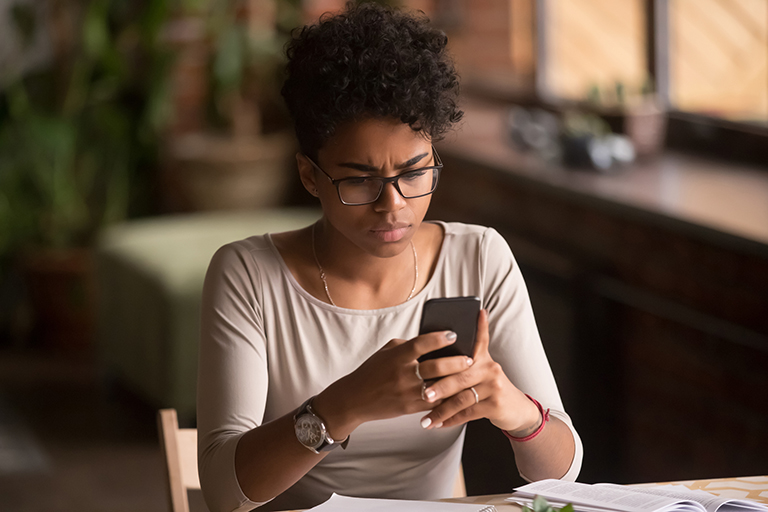Stay Safe: Avoiding P2P Scams on Payment Apps

Peer-to-peer (P2P) payment apps let you send money to friends and family instantly for things like meals, shared bills, or even that vacation you’re planning together. Though these apps offer plenty of security, it doesn’t mean you are immune to P2P scams on these platforms.
Peer-to-peer payments work differently than other forms of digital commerce. They are like using cash rather than a debit card. If you authorize payment to a scammer, it can be difficult (even impossible) for you to recover your money.
So, it’s important for you to know how P2P apps are different from other forms of payments, how these platforms work, the types of scams you may encounter, and security tips to keep you and your money safe.
Watch GNCU Chief Technology Officer Mike Dietrich discuss P2P scams with KOLO 8 News.
What Are P2P Payment Platforms?
Popular P2P apps include Venmo, PayPal, and Cash App. You link a debit or credit card or your bank account directly to the app. This allows you to withdraw funds and send them straight to your contacts or deposit money sent to you. Zelle is a digital payment network integrated into the services of many financial institutions too.
Transfers are quick and easy on P2P apps, but that also means when you authorize a payment, you are liable for that transfer and have fewer protections to recover those funds compared to a debit or credit card.
P2P Scams vs Financial Fraud
Most people are familiar with credit or debit card fraud. When you experience fraud, usually your card information is compromised, and someone uses your card number to purchase a good or service without your consent.
Credit card companies have sophisticated systems to detect fraud, and electronic payment processing for cards allows them time to stop fraud before the funds are transferred. Also, companies are legally obligated to limit your liability to fraud through the Fair Credit Billing Act.
However, money can be hard to recover on P2P apps because, most of the time, you agree to send the money. Think of it like this: Imagine your credit card is like a key to a safe full of your money. If someone steals the key (your card information), the bank can easily change the locks (cancel your card) and prevent further loss.
Scams, on the other hand, are more like someone tricking you into opening your own safe and taking your valuables. And when you authorize them to take those funds, even if you were tricked, you are responsible for the losses.
Common P2P Scams
As discussed above, credit card fraud is based on stealing your information, whereas P2P scams are focused on tricking you into sending money.
Impersonation
Scammers will call or text to trick you into believing they are your financial institution, the P2P platform, or some government agency like the police or IRS. A bank impersonator may report suspicious activity and ask you to send money to verify your account or test if your account is working correctly.
However, a financial institution will never ask you to transfer money for these reasons.
Someone impersonating a government employee may say you owe money for doing your taxes wrong or you have some previously unknown court fees or parking tickets, but you can take care of it by transferring money over an app. But government organizations typically don’t contact you unexpectedly through text or phone, and usually contact you via physical mail or even in person.
Phishing
Phishing is a similar tactic to impersonation scams, but instead, the fraudster is trying to get you to share a verification code, your password, or other sensitive information. The scammer might use fake email, text, or phone calls. Once they have this information, they will use it to access your account, make an unauthorized transaction, or lock you out.
Often, these communications usually have a time-sensitive element or say your account will be locked if you don’t respond. This tactic tries to get you to panic, so you rush to fix the problem without thinking too much.
However, if you get an unexpected communication from a P2P platform, it’s best to step away from the message, independently look up the contact information for that organization, and contact them directly.
Unauthorized Money Transfers
This occurs when a criminal is about to log into your account and transfer money without your permission, sometimes getting your info from a successful phishing tactic. Unauthorized transfers are more a form of fraud rather than a scam, but you still need to protect yourself. Fraudsters act quickly to move the money to a third account, making it difficult for you to recover the money.
It’s best to check your payment apps often to make sure there are no unauthorized transfers and enable multi-factor authentication to give yourself an extra layer of security.
Fake Product or Service
This scam involves selling you something like concert tickets or a service like car repair. They ask you to transfer the money, and after you do, they disappear without providing that product or service.
This is why it’s ideal to only send P2P payments to people you know or have met in person and avoid sending money to people you have only talked to over the internet. But if you are the victim of a fake product scam, you should contact the P2P network immediately to give yourself the best chance of recovering your funds.
‘Accidental’ Transfer
This one involves someone “accidentally” transferring you funds that were meant for someone else. Or you may be selling a product or service, and they overpay you by check or transfer. Then, the scammer will ask you to send the money back to them.
Later, you will find the money transfer was from a stolen or fake account, or the check doesn’t clear. But by the time you find out, the scammer has withdrawn your money, and you could be held responsible for the funds.
If you are ever asked to return money to someone you don’t know, contact the P2P platform instead, report the interaction, and let them deal with it.
Ways To Keep Yourself Safe From P2P Scams
Following these tips can help keep your money and information safe from P2P scams.
Know Who You Are Sending Money To
It’s best to use P2P payments with people who you know personally. Do not send or accept payments from people you don’t know.
Double-Check the Details
Details matter! When sending money through a P2P platform, a missed digit can be the difference between paying your friend and sending money to a stranger, never to be seen again.
So, double-check the phone number, account number, email, and other information, especially if you are sending money to a new recipient. You may even want to send a small amount of money for the first transfer to confirm you are sending funds to the right person. Some platforms require you to provide some personal information (like a phone number) before you can send money to someone.
Enable Alerts and Multi-Factor Authentication
Add an extra layer of protection by enabling alerts and multi-factor authentication (MFA). Alerts give you the ability to know instantly if there is an unauthorized transfer on your account.
MFA will email or text you a code to log into your account or initiate a transfer. This is a great way to make sure you are in control of your account and prevent scammers from accessing your money.
Slow down and Don’t Share Your Information
If you get an unexpected request from (what you think is) your bank or a P2P Platform asking you for your password, a verification code, or personal information, take a second and slow down. Most likely, that request is coming from a scammer who needs that info to compromise your account.
When you get a message asking for this information, stop communicating with them, don’t click on any links they send you, and independently look up the contact info for that financial institution. That way, you can be sure you are contacting that company, and they can help you with any problems if your account is compromised.
What To Do if You Find an Unauthorized Transaction
If you authorize a payment to a scammer, it can be difficult to get your money back. But if there is an unauthorized transfer, you have a better chance of recovering your funds. Speed is key, so quickly take these actions:
- Contact the P2P platform and let them know about the unauthorized transaction.
- Let your bank know about the unauthorized transaction. If your account or card is linked to the P2P account, they can prevent you from losing more money.
- Change your password to your P2P account and even your online banking platform.
- Activate multifactor authentication to make sure only you have control of your accounts.
- Report the fraud to the Federal Trade Commission. This can help stop the fraudsters.
- Keep the records of all your communications with the scammers.
- Check your accounts for suspicious activity in the weeks after you discover the security breach.
To learn more on how to protect yourself from fraud, read our 5 Tips to Avoid Phishing Scams.
